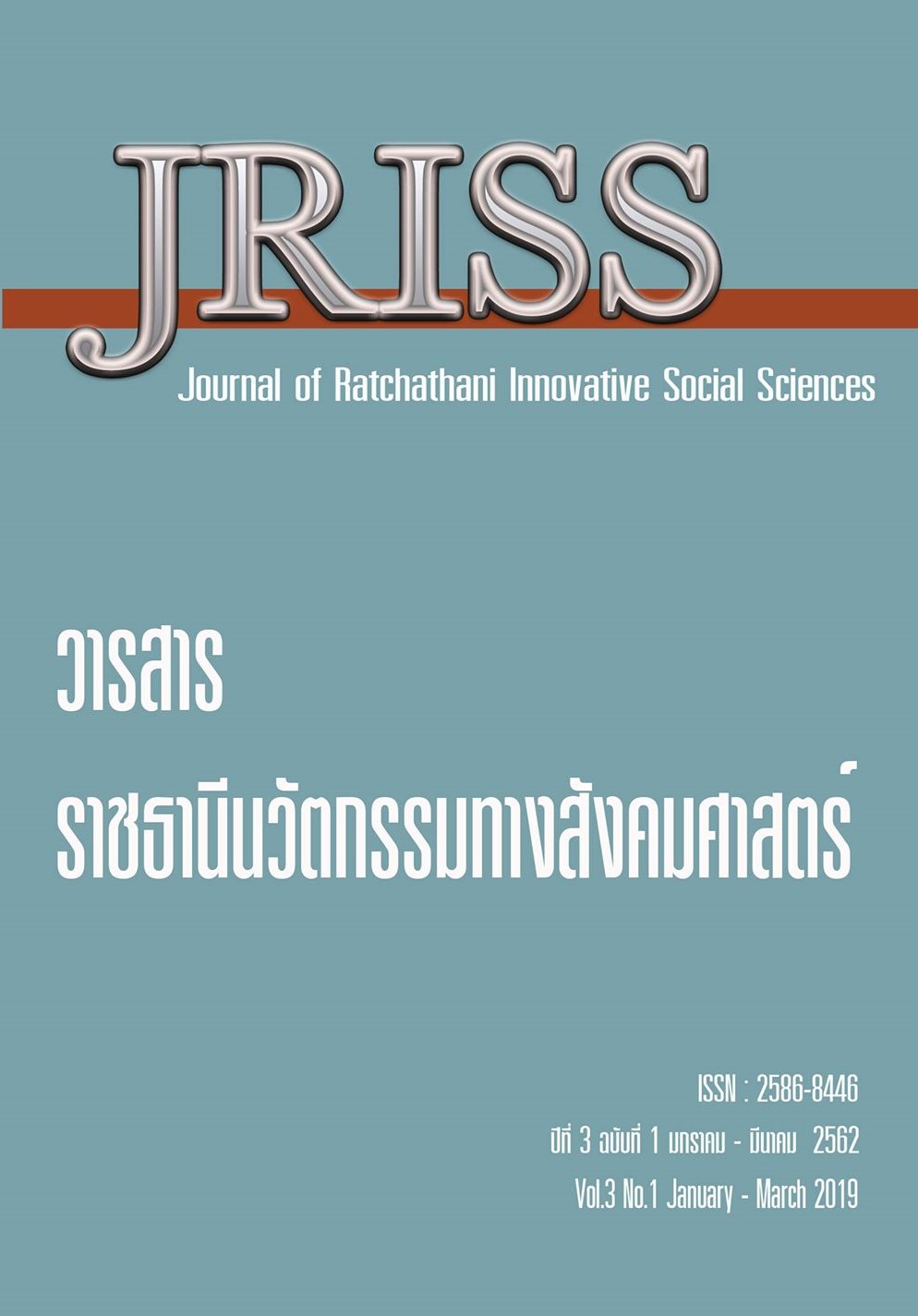Approaches for Retail Business Curriculum Management of Matthayom Wat Daokhanong School based on Dual Education System
Main Article Content
Abstract
The research is a mixed-method research were 1) to study the current and the desired state of retail business curriculum management of Matthayom Wat Daokhanong school based on dual education system 2) to propose approaches of retail business curriculum management of Matthayom Wat Daokhanong school based on dual education system. The population was the administrators and all teachers in Matthayom Wat Daokhanong school. The respondents were 30 people of Matthayom Wat Daokhanong school administrators and teachers. The data were collected using questionnaires, interview, and suitability and possibility test. Quantitative data were analyzed using frequency distribution, percentage, mean, standard deviation, Priority Needs Index Modified (PNImodified ) and content analysis.
The findings indicated that: 1) In overview, Matthayom Wat Daokhanong school had the different current states and desirable states of retail business curriculum management. The current states were at high level and the desirable states were at the highest level. The priority needs of retail business curriculum management of Matthayom Wat Daokhanong school based on dual education system were curriculum planning, curriculum supervisor, curriculum evaluation and curriculum implementation 2) The approach of retail business curriculum management of Matthayom Wat Daokhanong school based on dual education system were 7 approaches, which are curriculum planning 2 approaches, curriculum supervisor 1 approach, and curriculum implementation 4 approaches.
Article Details
ความคิดเห็นและข้อเสนอแนะใด ๆ ที่นำเสนอในบทความเป็นของผู้เขียนแต่เพียงผู้เดียวโดยบรรณาธิการ กองบรรณาธิการ และคณะกรรมการวารสารราชธานีนวัตกรรมทางสังคมศาสตร์ไม่ได้มีส่วนเกี่ยวข้องแต่อย่างใด มหาวิทยาลัย บรรณาธิการ และกองบรรณาธิการจะไม่รับผิดชอบต่อข้อผิดพลาดหรือผลที่เกิด จากการใช้ข้อมูลที่ปรากฏในวารสารฉบับนี้
References
กระทรวงศึกษาธิการ. (2551). พระราชบัญญัติการอาชีวศึกษา พ.ศ.2551. สืบค้นจาก http://www.moe.go.th/moe/nipa/ed_law/p.r.g.edu33.pdf
ชวลิต ชูกำแพง. (2557). การพัฒนาหลักสูตร. กรุงเทพฯ : สำนักพิมพ์มหาวิทยาลัยมหาสารคาม
รัชนี แก้วเจริญ,ชัยลิขิต สร้อยเพชรเกษม และเมธี ดิสวัสดิ์. (2558). การประเมินการดำเนินงานหลักสูตรประกาศนียบัตรวิชาชีพ ระบบทวิภาคี สาขาวิชาธุรกิจค้าปลีก ของสถานศึกษาอาชีวศึกษาเอกชนกลุ่มภาคใต้. วารสารศึกษาศาสตร์มหาวิทยาลัยทักษิณ 15 (มกราคม-มิถุนายน 2558) : 84-94.
รัตนา ดวงแก้ว. (2555). การบริหารและการพัฒนาหลักสูตร. เอกสารประกอบการสอนวิชาการจัดและบริหารองค์การทางการศึกษา. นนทบุรี:มหาวิทยาลัยสุโขทัยธรรมาธิราช.
กลุ่มงานสารสนเทศ โรงเรียนมัธยมวัดดาวคนอง. (2560). สารสนเทศ ปีการศึกษา 2560. กรุงเทพฯ: กลุ่มงานสารสนเทศ โรงเรียนมัธยมวัดดาวคนอง.
ศูนย์อาชีวศึกษาทวิภาคี สำนักงานคณะกรรมการการอาชีวศึกษา กระทรวงศึกษาธิการ. (2557). แนวทางปฏิบัติการจัดการอาชีวศึกษาระบบทวิภาคี ตามประกาศกระทรวงศึกษาธิการ เรื่องมาตรฐานการจัดการอาชีวศึกษาระบบทวิภาคี พ.ศ. 2557. กรุงเทพฯ: บริษัท จามจุรีโปรดักส์ จำกัด.
สำนักงานคณะกรรมการการศึกษาแห่งชาติ. (2553). พระราชบัญญัติการศึกษาแห่งชาติ พ.ศ.2542 แก้ไขเพิ่มเติม (ฉบับที่ 2) พ.ศ. 2545 และ (ฉบับที่ 3) พ.ศ. 2553. กรุงเทพฯ: พริกหวานกราฟิก.
สุวิมล ว่องวาณิช. (2558). การวิจัยประเมินความต้องการจำเป็น. กรุงเทพฯ: สำนักพิมพ์แห่งจุฬาลงกรณ์มหาวิทยาลัย.
อิสริยา ออสุวรรณ. (2559). แนวทางการบริหารสถานศึกษาอาชีวศึกษาเอกชนระบบทวิภาคี ในเขตกรุงเทพมหานคร. วิทยานิพนธ์ปริญญามหาบัณฑิต จุฬาลงกรณ์มหาวิทยาลัย.
Gisela Dybowski. (2005). The Dual Vocational Education and Training System in Germany.
Sullivan, S. & Glanz, J. (2005). Supervision that improves teaching 2nd ed. California: Corwin Press.


